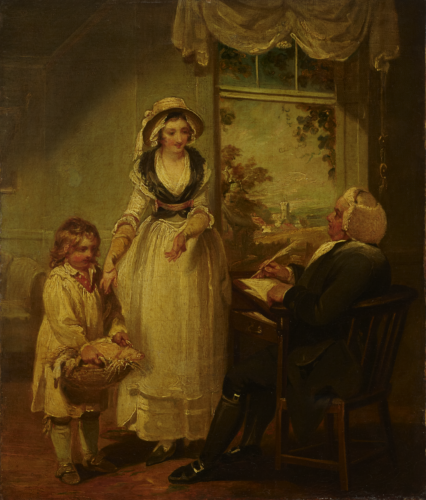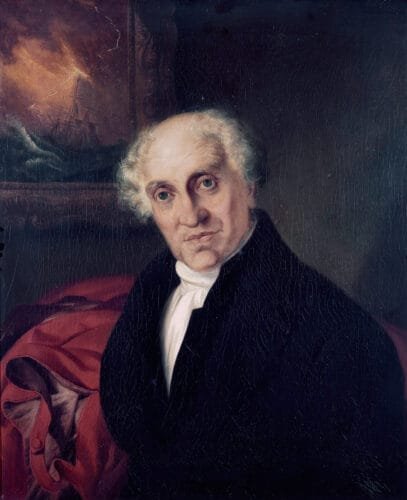Rectors and Vicars and Curates…Oh My!

I must confess, trying to understand the Regency clergy just about drove me over the edge. References didn’t answer my questions, then they would contradict one another. I thought I’d pull my hair out. Nancy Mayer at Nancy Mayer-Regency Researcher came to my rescue and straightened out so much of my confusion. Thank you, Nancy! Please, take time and check out her wonderful site. The three different types of clergy populated the parish church: the rector, the vicar and the curate. The latter two are the ones we hear about most but it is worth taking a moment to consider the rector, too.
Rector
One of the reasons for confusion about this position is that the rector did not have to be an ordained man — it might well be a college, a group, bishop, a nobleman, or even a female. The rector was simply the one who received the ‘greater’ tithes, 10% of the cereal crops grown in the parish, (which might be as much as 75% of the total tithes), in compensation for the freehold (land) used by the church. Beyond his clerical responsibilities, the rector played an active role in the social life of the neighborhood and in its civil administration, carrying out such duties as the registration of births, deaths and marriages, sitting on the magistrates’ bench and so on.
Vicar
The vicar is the more commonly encountered cleric. Though some parsons might have been devoted to their flock, the church on the whole had a reputation for idleness. Sincere faith was not a necessary quality for ordination as a minister of the Church of England. With enough money and connections a man might be ordained and installed in a desirable living. A living, (a parish church), was typically set up so that a rector or a vicar presided. In the Regency period, once installed in a living, a man was there for life. No one less than the bishop could remove him for cause. An income and home for life would certainly be appealing; however, the if the holder of the living wished to retire he had to employ a curate to take charge of a parish

Whether or not a vicar had the resources for hiring a curate depended on the parish itself. His portion would be the lesser tithes, 10% of the parish’s produce and livestock. In some vicarages this might be as little as £50 a year. (For reference, this is roughly the equivalent of a minimum wage job.) In other parishes, the lesser tithes could amount to a considerable sum. Some hints in Pride and Prejudice suggest the Kympton living might have amounted to £500 -£600 a year. A vicar could resign his duties to a curate once he obtained the permission of his bishop. Many hired a curate, who would be paid out of the vicar’s own pocket, from the beginning of their incumbency. Others only did so when they had to retire. A vicar did not have to give up the parsonage house to the curate. He might continue to live in it himself and leave the curate to find his own living quarters somewhere within an easy distance of the church.
Curate

A curate was usually a young man just recently ordained, who assisted or sometimes performed the duties of a clergyman. Though they might do all the work of the parish, their salaries were often meager, perhaps as little as £50 per year, not enough to afford a maid. Even at trifling wages, a curacy was not easy to obtain. In the early 1800’s curates made up close to half of the clergymen. Even with a position, their future was not secure. The death of the incumbent did not imply the curate would ascend to the living. Moreover, there was no guarantee that the successor would even continue to employ the curate. A curate did not retire unless he had private means of support because the church offered no pensions. As members of the clergy, curates were regarded as gentlemen. Despite their official standing, the subservient nature of their position and their paltry incomes caused some of the gentry and peers to hold them in disregard.
For more information see:
Collins, Irene. (1998) Jane Austen, The Parson’s Daughter . Hambledon Press.
Collins,Irene. (2002) Jane Austen & the Clergy. Hambledon Press.
Day, Malcom. (2006) Voices from the World of Jane. Austen David & Charles .
Mayer, Nancy. Nancy Mayer-Regency Researcher
Sullivan, Margaret C. (2007) The Jane Austen Handbook . Quirk Books.
by Maria Grace Copyright 2013, all rights reserved

Hi, Thanks for your research. I also did some digging to try and find out just how great of a position Mr. Collins held with Lady Cat. I got the catagories but not the percentages. Thanks again! ~Jen Red~
I was surprised at how difficult some of these details were to track down. That’s why I decided to start sharing these on my blog. Next week I have an article of livings and the details surrounding them.
thanks Jennifer!
Fastinating.
Thanks, Tina!
Reblogged this on and commented:
A rather intriguing post by an excellent author and friend. I learned a lot about the Regency era clergy. Cannot recommend highly enough.
Thanks, Matt. That’s a huge compliment from a real history buff!
Pingback:An Officer and a Gentleman pt. 2 | Maria Grace
Thank you for this. I’ve always been a bit hazy about the differentiation between them all. You always hear about younger sons etc. or those of the upper middle class going to the rector for part of their education. I knew the curates were chronically short of money and now I know why!
Pingback:The Regency Interpreter tackles Mansfield Park pt.2 - Random Bits of Fascination
Thank you so much for a very interesting post.
Thank you so very much for the article on Rectors and Vicars and Curates. It helps me to understand the
stories from that era. I appreciate the great effort of the research involved. We thank you again and your
assistants. Bless you! mljones
Pingback:Regency Christmas Traditions: Mumpers, Mummers and Sword Dancers - Random Bits of Fascination
I believe the difference between a rector and a vicar goes back further than the time mentioned here. A vicar (one who works for another) was sent to a parish by a monastry or other religious house receiving the tithes of the parish. He received a stipend. A rector was the spiritual director of a parish independent of a religious house. He received the tithes.
One of the challenges in sorting all this out is that these things started well before the regency era and evolved over time. There aren’t a lot of fixed dates for when things changes and the changes happened in different places at different times. I can see how what you described could have evolved into what I understood a Rector to be in the Regency era. Thanks, Liz!
Pingback:Render Unto Ceaser | A Novel Approach
Pardon my ignorance of this, but is the term “parson” a general term for any clergyman, or is it specific, as in another term for vicar?
The 2nd entry in my dictionary says, “A vicar or any beneficed member of the clergy,” so basically the vicar or rector of a parish. The dictionary goes on to a 3rd entry saying that coloquially it’s any member of the protestant clergy.
Thanks for sharing! I believe that the father of the Bronte sisters was a rector. If not please correct me. I think that he would have to be because he sent his daughters to a private school. He would have to be able to afford it.
Thank you. Your historical posts are interesting. I cannot conceive of calling a priest Mr. Surname. The Anglican religion is weird. My impression from reading Jane Austen’s books is that the Anglican clergy were very worldly. Considering how they were chosen, I can see why.